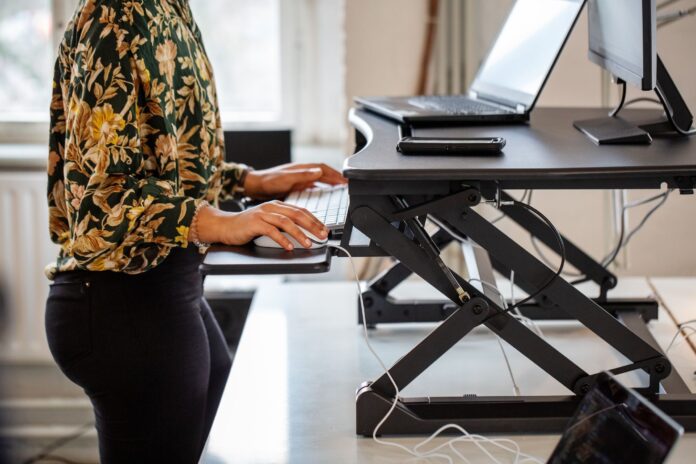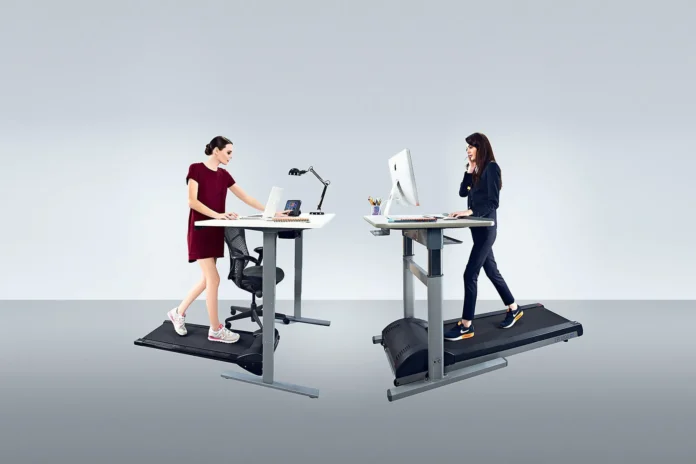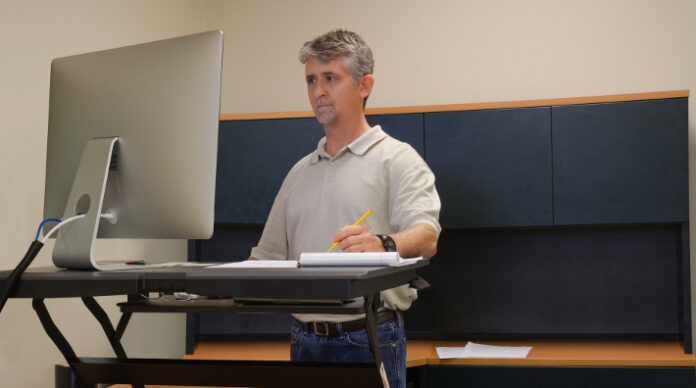You’re not alone if you spend the most of your day sitting at a desk or in a car. People in the United States are less active than ever because of the ease of modern technologies and lifestyles.
What Do You Mean by Sedentary?

Let’s start by defining a sedentary lifestyle. An inactive lifestyle is one in which you obtain fewer than 150 minutes of moderate exercise or 75 minutes of strenuous exercise per week, according to the Centers for Disease Control and Prevention (CDC).
The World Health Organization (WHO) estimates that between 60 and 85% of the world’s population does not engage in this basic amount of activity. Additionally, it places inactivity as the fourth most significant contributor to global death. According to the WHO, inactivity contributes to 3.2 million deaths worldwide each year.
Recent Information on This New Office Trend
Due to the supposed health advantages of standing desks, including improved work efficiency, improved cardiovascular health, and relief from muscle pain, standing desks have grown in popularity and even become fashionable in recent years. Well-meaning medical professionals, other health and safety agencies, and workplace furniture producers have all advocated these new desks. So, are there any advantages to a standing desk? Are these advantages genuine?
A Standing Desk: What Is It?

Standing desk designs can range from fixed, adjustable-height standing desks that require employees to stand during the workday to adjustable sit-stand desks that let users alternate between standing and sitting during the course of the day. A platform or adjustable-height base that houses a computer display, keyboard, and mouse makes up a standing desk.
Why Are Standing Desks Such a Big Deal?
Scientists concur that spending too much time seated, whether at a desk or in front of a TV, is hazardous. A recent study conducted by the National Center for Biotechnology Information (NIH) of the National Institutes of Health (NIH) supports current criticisms of sedentary lifestyles (NCBI). According to the study published in September 2018, sedentary activity, such as sitting at a desk, raises the risk of cancer, type 2 diabetes, and other chronic diseases overall. For the purposes of the study, sedentary behavior was defined as spending six to eight hours per day sitting down, a standard that traditional office workers in most nations can readily meet.
Office workers of all ages, including Millennials, have hopped on board to accept this new way of working. Numerous people have mentioned feeling more energised, less worn out and tired from exercise, and more motivated to walk around their workstation and work with coworkers. But does this support a long-term shift to this new way of working?
Do Sit-Stand Desks or Standing Desks Have Advantages?

Additional research (as well as common sense) suggests that standing all day might raise physical discomfort while also decreasing productivity, just like sitting all day can be bad for your general health. The ability to change one’s work posture as needed makes sit-stand desks seem to give the best of both worlds.
An influential general medical magazine, the BMJ, published the findings of a year-long trial involving 146 office workers in the United Kingdom last October. The amount of time office workers spent sitting was significantly reduced when they employed sit-stand desks. In comparison to those who remained to sit at their workstations all day, they also reported better health and greater work performance. Additionally, compared to their seated counterparts, these individuals reported being more engaged at work and feeling better about their professions. They also reported lower levels of worry, reduced exhaustion from their jobs, and improved quality of life.
Effectiveness of Standing Desks Overall

The Journal of Physical Activity and Health says that “using a standing desk for three hours burns an additional 24 calories, about equal to the number of calories in a carrot.However, if you walk for just 30 minutes over your lunch break, you could burn an additional 100 calories per day.
On the other side, certain scientific investigations have not proven that greater physical benefits exist. According to studies conducted by the Society for Human Resource Management and specialists from Tufts University and the University of Pittsburgh, participants did not experience any appreciable weight loss or other ostensible health benefits, although they did lead less sedentary lifestyles and, for some users, had their blood pressure slightly lower.
Therefore, it seems that there is still some debate on the general efficacy and advantages of using a standing desk or sit-stand desk. We advise you to choose whatever course of action seems right to you and provides you with the most comfort throughout your workday.









